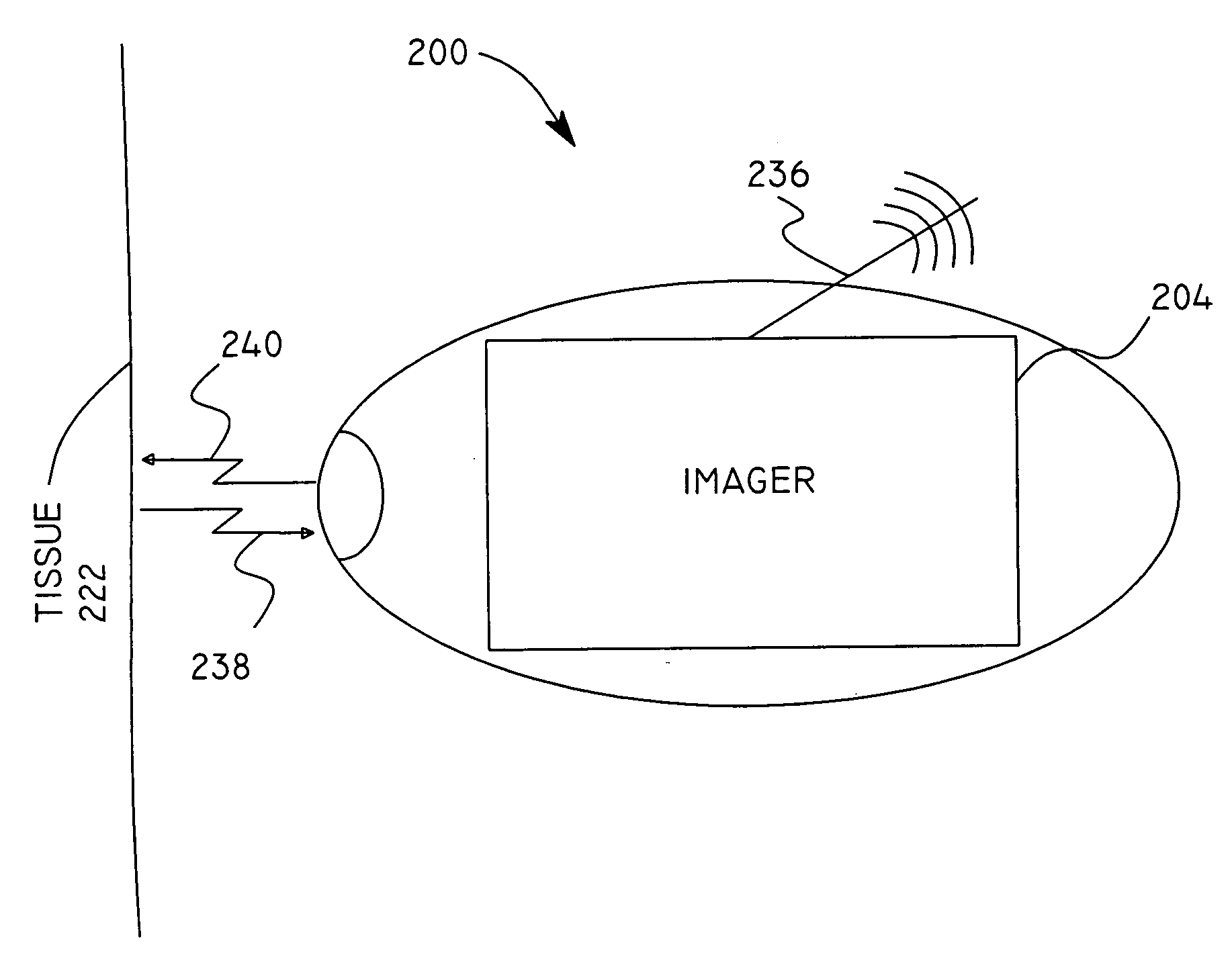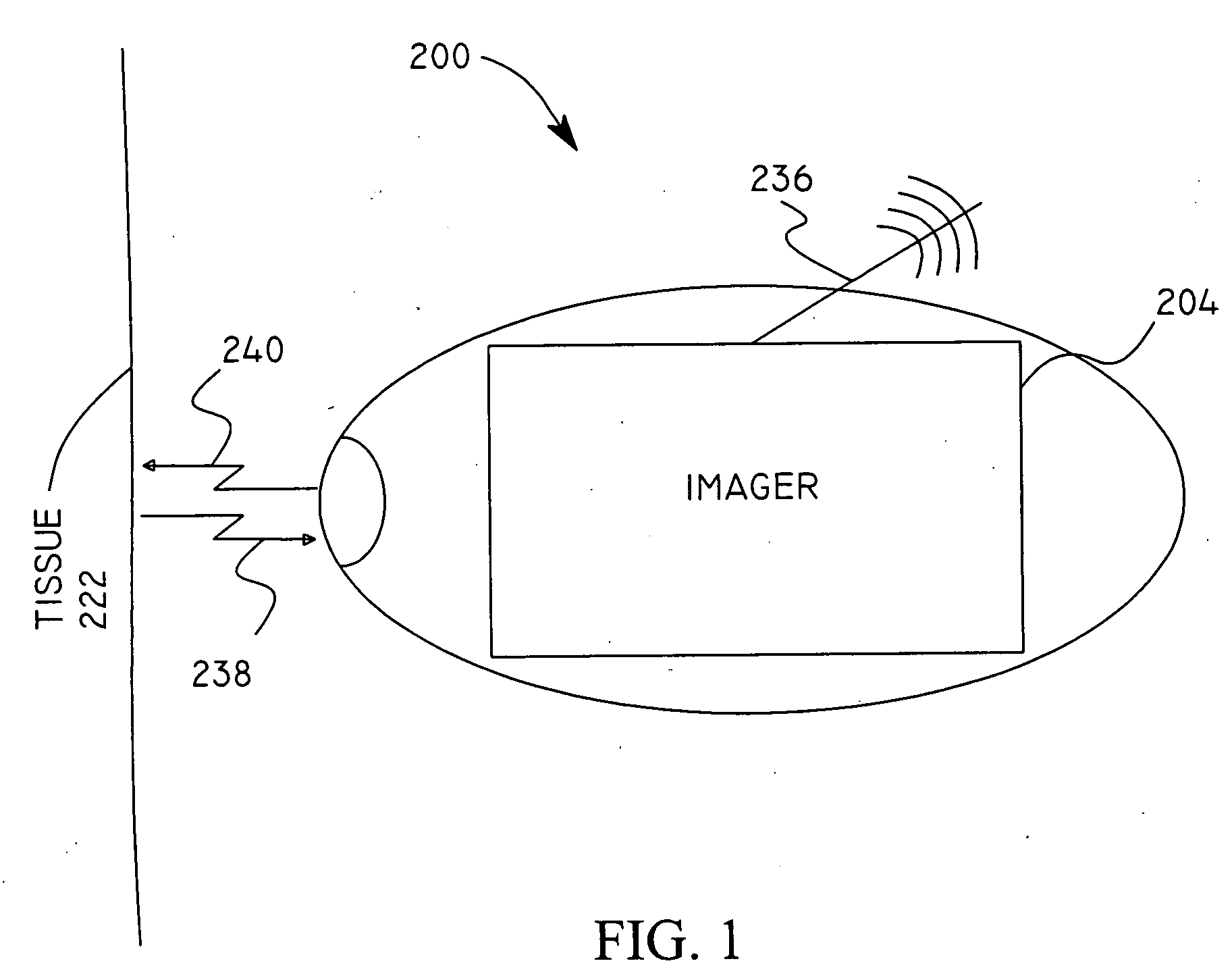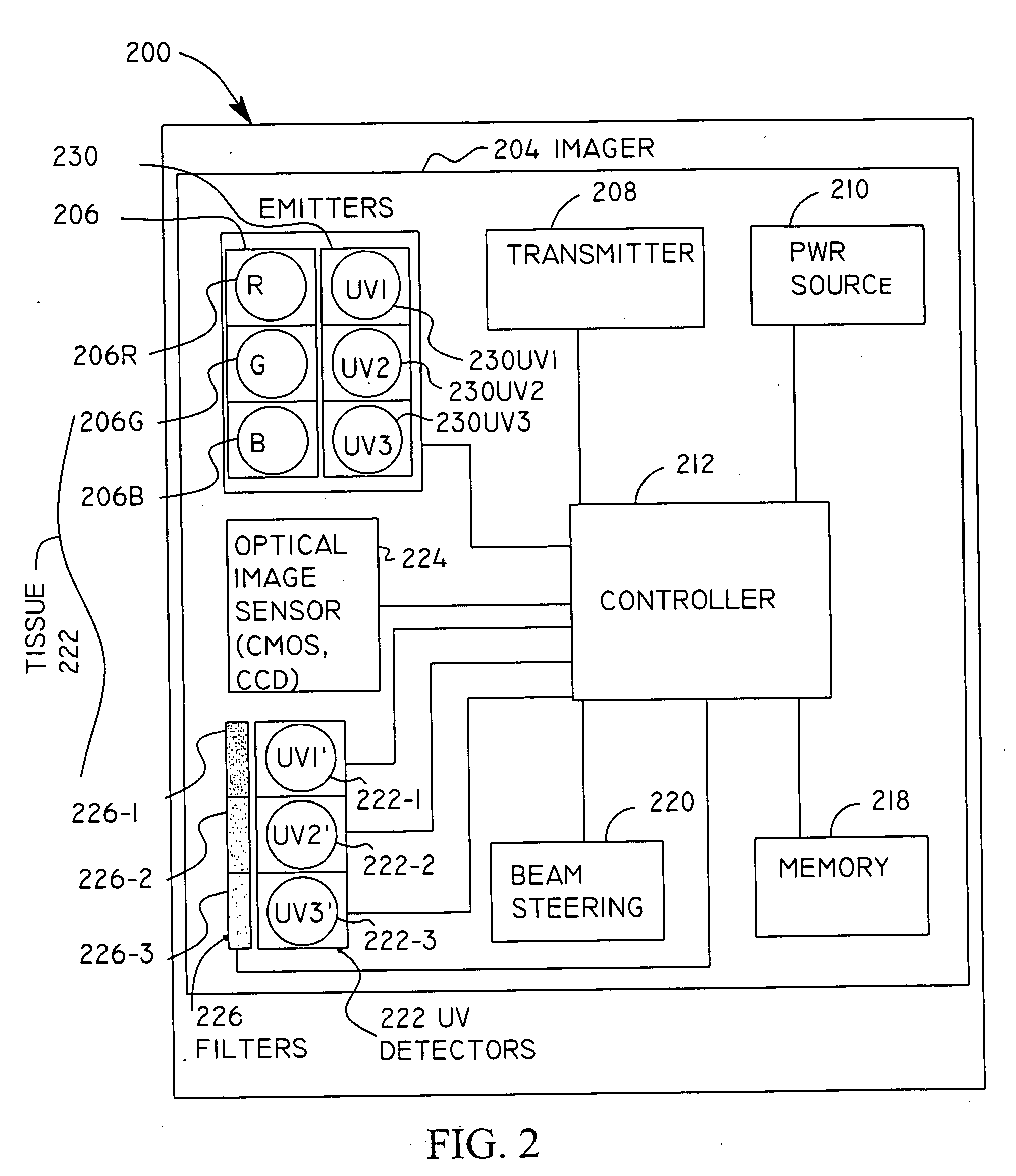Micro-scale compact device for in vivo medical diagnosis combining optical imaging and point fluorescence spectroscopy
a compact device and micro-scale technology, applied in the field of medical imaging apparatus for biological tissue visualization and assessment, can solve the problems of high cost and harmful radiation exposure, time consumption of x-ray imaging, and the inability of mri and ct scanning to provide detailed photographic images of the surface of sampled tissue when desired, so as to achieve accurate tissue detection and time-consuming, non-invasive
- Summary
- Abstract
- Description
- Claims
- Application Information
AI Technical Summary
Benefits of technology
Problems solved by technology
Method used
Image
Examples
Embodiment Construction
[0034] A preferred embodiment of the present invention will now be described in more detail.
[0035] The present invention is directed to the use of a medical imaging and assessment apparatus and method including CMOS or CCD sensors, UV light sources, UV / visible point sensors, visible light sources, at least one visible imaging detector, dispersion selection components, and beam steering components (e.g., lenses, gratings, mirrors, prisms, optical fibers, beam-splitters, combinations of these, or like) to image an area of tissue combined with point fluorescence spectroscopy of the area in order to image and detect and distinguish normal areas from abnormal areas (e.g., areas having pre-cancerous and cancerous cells and the like). Moreover, the present invention provides data (e.g., image and fluorescence information including fluorescence intensity) to the operator (e.g., a surgeon, or other medical provider) in real time for real-time diagnosis and detection of abnormalities such as...
PUM
 Login to View More
Login to View More Abstract
Description
Claims
Application Information
 Login to View More
Login to View More - R&D
- Intellectual Property
- Life Sciences
- Materials
- Tech Scout
- Unparalleled Data Quality
- Higher Quality Content
- 60% Fewer Hallucinations
Browse by: Latest US Patents, China's latest patents, Technical Efficacy Thesaurus, Application Domain, Technology Topic, Popular Technical Reports.
© 2025 PatSnap. All rights reserved.Legal|Privacy policy|Modern Slavery Act Transparency Statement|Sitemap|About US| Contact US: help@patsnap.com



